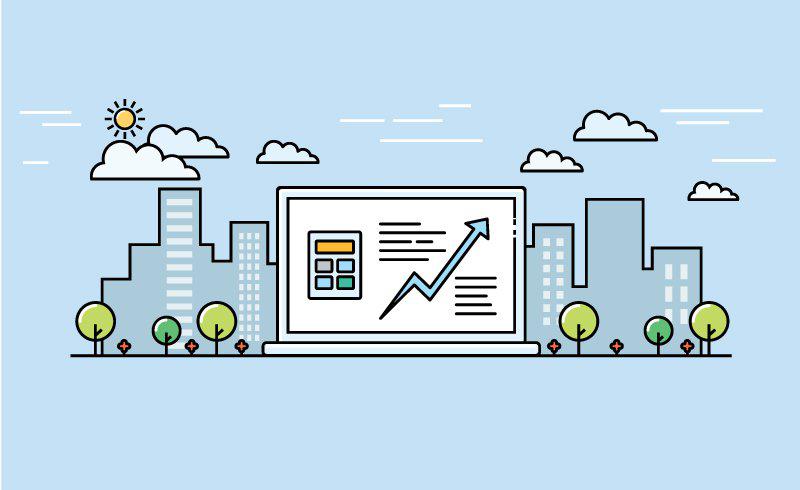This piece has been contributed by Adam Beck, Executive Director at Smart Cities Council Australia New Zealand. Adam will be presenting at
Some wrestle with the smart cities terminology - the idea, the definition, the scope. For more than a decade we have used these two words in multiple contexts, and it’s been more than polarising. It carries some baggage in its history, predominantly based on the way it was sold in the past, and the at-times obsessive focus on embracing technology, with lack of ‘people’ focus.
But a transition is underway. One that is seeing an exciting new movement emerge.
Academic and urban strategist, Boyd Cohen, in a 2015 article The 3 Generations of Smart Cities, very eloquently highlighted the subtle and not-so-subtle differences of the various levels of maturity of the smart cities agenda. In this article, he laid out the three generations of smart cities evolution, with each having a different bent on its approach.
Generation 1.0 was top-down, technology driven, and with little understanding of how cities and people worked as systems. Generation 2.0, which we are moving into as we speak, is city-led and vision inspired, with technology as the enabler. And of Generation 3.0, Cohen describes a citizen-led, co-created model of using technology to help build truly sustainable, and inclusive communities.
Technology, from enabler and accelerator

Make no mistake, technology, data and intelligent design is at the heart of the smart city, however for the sole purposes of accelerating our sustainability, workability, liveability, and resilience targets. It’s all about accelerating the conditions for human development, and prosperity. And I don’t use the word 'accelerating' lightly. But it is necessary.
You see, we have a time imperative, which is not often talked about in the context of smart cities. We are constrained in the availability of time to fix our national energy crisis, housing affordability crises, and climate crises. I could go on, but that's enough crises to deal with in one article!If we are to make real impact and effectively deliver real solutions to arrest some of these wicked urban challenges, we need to deploy and scale, quickly. Only then can success be realised. One-off pilots are to be commended, but aggregating demand and scaling is critical.
Therefore, there needs to be a clear line of sight between the smart city, and the smart development. And by smart development, I refer to the master planned community, urban regeneration precinct, an existing neighbourhood plan, or campus development.
These are the building blocks of the smart city, and serve as the springboard for replicating and scaling. But to achieve this, we need to understand what smart cities means at this important, more finer grain, level of city-building.
Imagine if we had the opportunity to be in 'smart cities sync' with our urban and suburban development projects. What if we embraced an accepted definition of a smart development, and a common language within the development industry and in local and state government that we all helped co-create?May be there would be the opportunity to establish a supporting policy environment, one that would create the conditions for alignment, greater consistency, and potentially acceleration of the opportunities in using technology and data to enhance quality of life and greater inclusiveness.
With greater demand (thanks to heightened awareness and capacity), equally matched by the readiness of supply side solutions, would come better communities.
In data we trust, in analytics we thrive

Communities that are aware, and digitally engaged, can thrive. As they embrace the role of data to optimise in real-time, they can then transition to a place where predictive analytics allows enhance performance. Employment, mobility, climate, water, housing, and health are just some of the data sets we can ‘pull’ in real-time. No need to rely on five-year-old census data that is already a year old the day its released.
With this as the core function of the smart city, we can look to the 'community as a platform' idea more seriously, where the community is the source of the most relevant, granular, and accurate data.
Thanks to the Internet of Things we now have a framework for measuring the pulse of our cities, and now communities. But for this to work, we need to install the eyes and ears of the city - that digital layer of sensors and actuators in the built environment that are as essential as reinforcing steel, plumbing, and traffic lights.
Installing smart infrastructure that collects, communicates and crunches data needs to become a seamless and frictionless activity for the urban development sector.
But where do we start?
The Code for Smart Communities

This is all sounds nice - easy to write about, harder to execute. But this is about to change with the Code for Smart Communities, a national reference guide for government and the development industry, currently under development by the Smart Cities Council and its strategic partner, the Green Building Council of Australia.
Set to articulate the necessary elements of smart communities, the Code will detail the principles and metrics for successfully embracing technology and data as a catalyst for more liveable, workable and sustainable urban development. The Smart Cities Council’s technical partner, Place Design Group, is playing a critical role in helping shape the necessary 'connective tissue' between traditional planning processes and the technology and data requirements for urban development.
A Scoping Paper has been released by the Smart Cities Council, and you are invited to contribute to the content of the Code. In-person industry work sessions are underway, as well as the assembling of a virtual review committee.
A draft of the Code is set to be released in Washington DC in early October at Smart Cities Week. However, Urbanity '17 delegates will be treated to a 'reveal' of the Code before it gets shipped to DC.

About the author
Adam Beck is presenting at Urbanity '17 and will draw on a recent stint as Director of Innovation at EcoDistricts, a Portland-based non-profit think tank, to present his new model of sustainable urban regeneration that is accelerating and benchmarking city projects and infrastructure development across the country.
Urbanity '17 is a two-day conference exploring new markets and business models. At Urbanity '17 you'll hear from the best and brightest minds, gaze into the future of disruptive technologies and learn more about our built environments through interactive workshops.
The conference will come to life through 30+ speakers, 3 x stages, 5+ workshops, 500+ attendees, 10+ networking events, 1 x "roast" lunch.
Tickets are limited and still available, to register click here.















